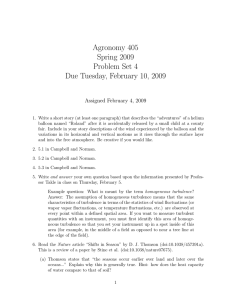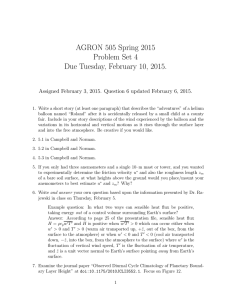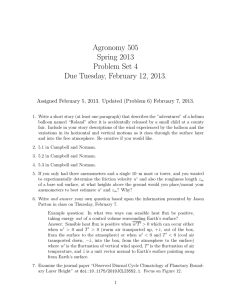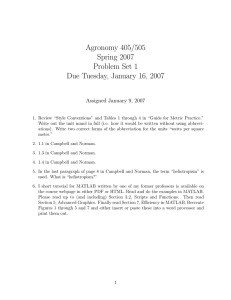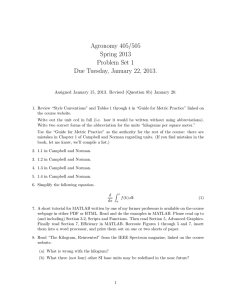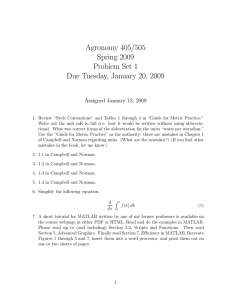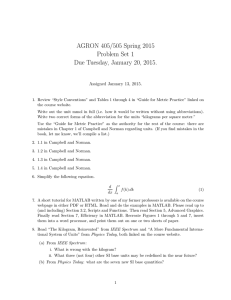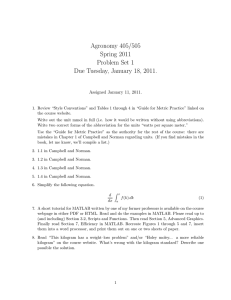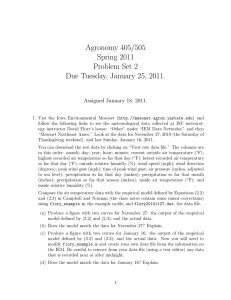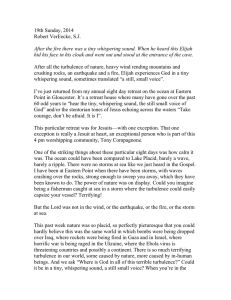Agronomy 505 Spring 2009 Problem Set 4 Due Tuesday, February 10, 2009
advertisement
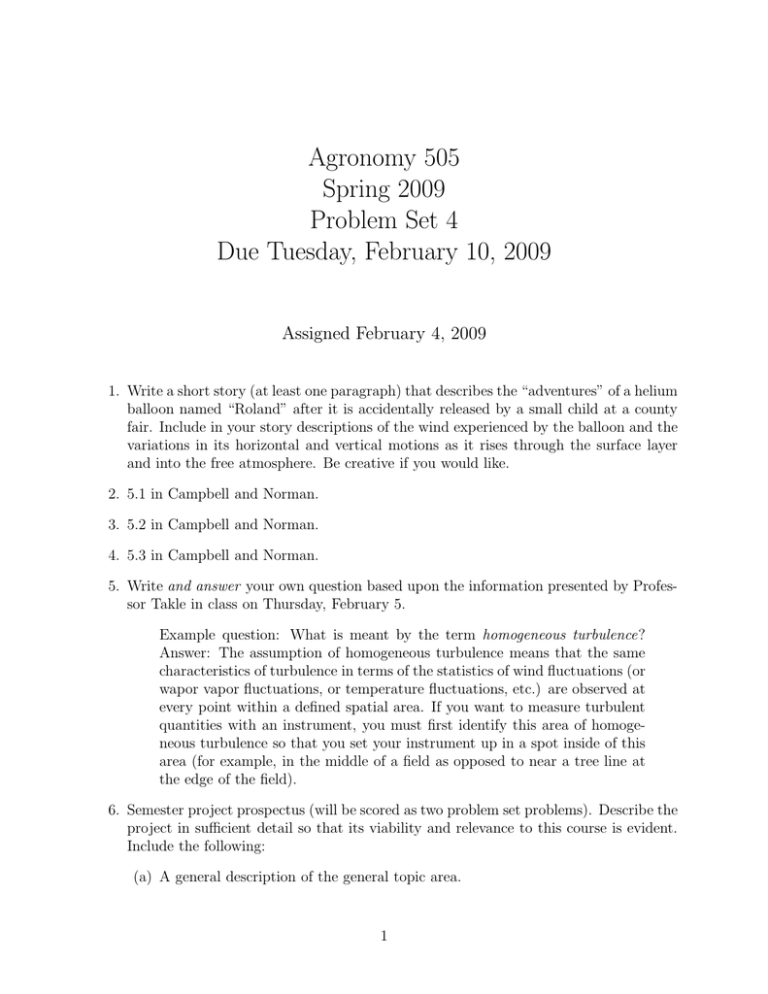
Agronomy 505 Spring 2009 Problem Set 4 Due Tuesday, February 10, 2009 Assigned February 4, 2009 1. Write a short story (at least one paragraph) that describes the “adventures” of a helium balloon named “Roland” after it is accidentally released by a small child at a county fair. Include in your story descriptions of the wind experienced by the balloon and the variations in its horizontal and vertical motions as it rises through the surface layer and into the free atmosphere. Be creative if you would like. 2. 5.1 in Campbell and Norman. 3. 5.2 in Campbell and Norman. 4. 5.3 in Campbell and Norman. 5. Write and answer your own question based upon the information presented by Professor Takle in class on Thursday, February 5. Example question: What is meant by the term homogeneous turbulence? Answer: The assumption of homogeneous turbulence means that the same characteristics of turbulence in terms of the statistics of wind fluctuations (or wapor vapor fluctuations, or temperature fluctuations, etc.) are observed at every point within a defined spatial area. If you want to measure turbulent quantities with an instrument, you must first identify this area of homogeneous turbulence so that you set your instrument up in a spot inside of this area (for example, in the middle of a field as opposed to near a tree line at the edge of the field). 6. Semester project prospectus (will be scored as two problem set problems). Describe the project in sufficient detail so that its viability and relevance to this course is evident. Include the following: (a) A general description of the general topic area. 1 (b) Potential quatitative models that you will investigate. Review what we have talked about in class, and take a look at what is covered in future chapters of the book. (c) Potential figures that will be included in the report. Plan for three to five figures. You are not bound to include exactly the figures you describe in this prospectus, but brainstorming now will be useful. (d) Data that will be required. (e) Some possible sources for this data. I can work with you to obtain the data, but your ideas of where to look will be helpful. 7. Read the Nature article “Shifts in Season” by D. J. Thomson (doi:10.1038/457391a). This is a review of a paper by Stine et al. (doi:10.1038/nature07675). (a) Thomson states that “the seasons occur earlier over land and later over the oceans...” Explain why this is generally true. Hint: how does the heat capacity of water compare to that of soil? (b) By how much has the phase of annual temperature cycle changed over land (the “terrestrial phase shift”) between 1954 and 2007? (c) How well do global climate models (such as those used by the Intergovernmental Panel on Climate Change) predict or reproduce this change? (d) Explain how both the phase and amplitude of the annual temperature cycle can change the average date on which, for example, temperatures normally remain above freezing. Hint: use Figure S1 in the “Supplementary Information” of the Stine et al. article. 2
